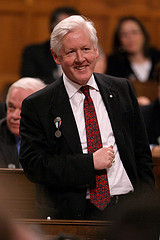 OTTAWA – ATTAWAPISKAT – Leader’s Ledger – Caley is two months old, and was sleeping quietly on the bed near her mother. A beautiful baby, shock of dark hair and a peaceful face.
OTTAWA – ATTAWAPISKAT – Leader’s Ledger – Caley is two months old, and was sleeping quietly on the bed near her mother. A beautiful baby, shock of dark hair and a peaceful face.
We visited Caley and her mother this morning in Attawapiskat. They live with Caley’s dad in a one bedroom shack, which is kept warm with a wood stove that leaks, the door shielded by a blanket to keep the cold air out. It is -23 out, with a steady north wind bringing clear, crisp weather. Caley’s house has no running water, and no toilet. There is a shared toilet and sink in the house next door.
Caley’s little face and presence on that bed stays with me still. What will her life be like? If it takes a village to help a child, it takes a country to help a village.
1,800 people live in Attawapiskat, one of several isolated Cree communities on the James Bay coast north west of Moose Factory. More than half the people are under the age of 24. The community got running water and sewage treatment thanks to a federal-provincial agreement signed in the early ’90’s (a time familiar to me), but it doesn’t cover all the houses.
 The housing backlog is nothing short of catastrophic – old houses needing to be fixed up, mould and rot are widespread, and overcrowding is rampant.
The housing backlog is nothing short of catastrophic – old houses needing to be fixed up, mould and rot are widespread, and overcrowding is rampant.
Chief Theresa Spence, who had the guts to declare a state of emergency and who is trying to deal with some challenges of the immediate past, greeted us warmly together with Co-manager Clayton Kennedy, who knows and understands the “numbers”.
We visited old and new housing, (21 to a two bedroom house), and got a sense of the good, the bad, and the really ugly.
Visited the Healing Lodge built with money from the Aboriginal Healing and Wellness Centre (a legacy of Rae government in the ’90’s) – beautiful structure hasn’t been funded for operations – no running water, needs better heating.
Red Cross and Ontario emergency teams impressive, most urgent cases will see some improvement when they move into healing lodge, but my fear is that southern complacency will set in once 22 modular homes arrive at the end January.
Yes, it’s an emergency, but let us understand the political dynamic at work. Harper uses the crisis to shift blame on to reserve leadership, and sends a clear signal to all other reserves – “open your mouths and complain and we’ll take you over…” ‘Third party manager’ such a euphemism, not a third party, but a direct hire of the colonial Harper administration, will just fire a bunch of people and declare victory.
The colonial administration has two levels of intervention – the first being the co-manager, who works with the band council. Clayton Kennedy admits there were some budget issues – but shows me how the Council itself has begun the changes that will lead to balance (more quickly than Jim Flaherty). The problem is not enough benefit from economic development, no resource sharing, and no change to colonial structures that have not really changed. Will there be a “Northern Spring”? Or an “occupy movement”? Don’t see how people who have been so marginalised and treated with such condescension and lack of respect will continue to just sit back and take it.
This community and hundreds like it have been “out there” in the awareness and consciousness of most Canadians. But now they are “right here”, on our screens, and next door in our communities as the barrier between aboriginal and non-aboriginal just breaks down.
The Kelowna Accord was the product of a year and half’s worth of negotiation and discussion between the federal government, the provinces and territories and the aboriginal leadership across the country. Housing, infrastructure, water, education, and new structures of accountability were all there – real money fully booked in the 2005 budget, the one the Conservatives, Bloc, and NDP all decided to defeat.
When Mr Harper took over, he threw Kyoto, Kelowna, and national child care out the door. So the underfunding in Attawapiskat for basic resources, and the absence in any initiatives on self-government and accountability, are his responsibility.
His calculated decision to “blame the victim” and to attack band management has to be exposed for what it is, a deliberate attempt to avoid any responsibility for his government’s neglect. And it’s not INAC or Minister Duncan, it’s Harper himself who saw a political problem and decided to turn the tables and blame the victim.
The court battle next week over the appointment of the colonial Harper administrator will be an interesting test.
These issues will not go away. The underlying question is this – can we find the political will to imagine different structures, to end the isolation and deprivation that has become a way of life, and to bring the country together behind a new strategy?
Bob Rae MP
Leader, Liberal Party of Canada
